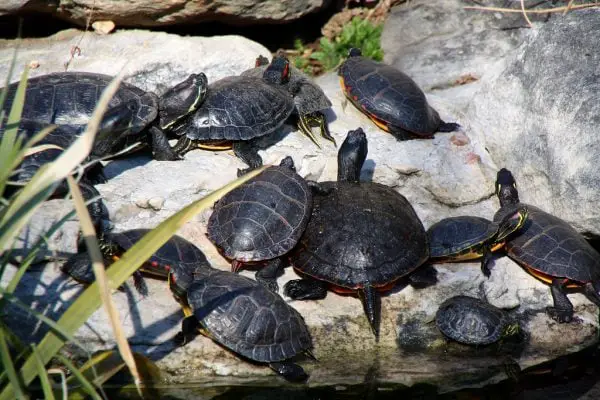With their vibrant beaks and comical waddles, puffins have captivated hearts and ignited curiosity for centuries. These adorable seabirds, known for their playful antics and fascinating social lives, play a vital role in marine ecosystems. But beyond their charming appearance lies a fascinating layer of language – the diverse collective nouns used to describe them, each offering a glimpse into their behavior and social dynamics.
Collective Nouns for Puffins
Unlike some animals with singular collective nouns, puffins boast a diverse vocabulary, each term reflecting the specific context of the group:
- Colony: This widely used term signifies a large and densely packed group of puffins that nest and raise their young together, often on cliffs, islands, or burrows dug into the ground. It evokes a sense of community, shared space, and intricate social interactions within these vibrant breeding grounds.
Example: As the first rays of dawn kissed the rugged cliffs, a colony of puffins emerged from their burrows, their colorful beaks gleaming in the morning light. The air buzzed with activity as parents returned with fish for their chicks, while young puffins practiced their swimming and flying skills, showcasing the bustling life within this thriving colony.
- Raft: This term describes a group of puffins floating or swimming together on the water’s surface, often while feeding or resting. It evokes a sense of shared purpose, synchronized movement, and the peaceful camaraderie observed within these temporary gatherings.
Example: Glistening under the warm afternoon sun, a raft of puffins bobbed gently on the waves, their black and white plumage contrasting beautifully with the turquoise water. As they bobbed and dived in unison, they resembled a floating island of vibrant life, showcasing the beauty and tranquility of their communal resting behavior.
- Circus: This playful term, less commonly used but nonetheless fitting, describes a group of puffins engaged in aerial acrobatics. It evokes a sense of excitement, agility, and the sheer joy of movement displayed by these charismatic creatures.
Example: Soaring gracefully through the air, a circus of puffins performed a breathtaking display of aerial acrobatics. Their wings beat in perfect unison as they dived, swooped, and performed playful flips, showcasing their remarkable aerial prowess and adding a touch of whimsical charm to the coastal landscape.
- Puffinry: This specific term, used less frequently than others, signifies a location where a colony of puffins nest and raise their young. It evokes a sense of sanctuary, shared purpose, and the vital role these designated areas play in the puffin life cycle.
Example: Nestled amongst the windswept cliffs overlooking the crashing waves, the puffinry was a haven for hundreds of breeding pairs. The burrows dug into the hillside formed a maze of activity, with parents diligently caring for their young, highlighting the importance of this protected environment for the continued survival of these magnificent seabirds.
Interesting Facts About Puffins
Understanding these collective nouns deepens our appreciation for the diverse behaviors and remarkable capabilities of puffins. But venturing deeper reveals their fascinating biology, ecological significance, and the challenges they face:
Masters of the Dive: Puffins are the only birds that can fly underwater. They use their powerful wings to propel themselves through the water, reaching depths of up to 200 feet in search of fish, their primary prey. This unique adaptation allows them to access food sources unavailable to most other birds, highlighting their remarkable evolutionary capabilities.
Ambassadors for the Ocean: Puffins play a crucial role in maintaining healthy marine ecosystems. As they hunt for fish, they help to regulate fish populations and maintain the balance of the food web. Additionally, their guano (waste) acts as a natural fertilizer, enriching the soil and supporting the growth of vegetation on the cliffs they inhabit.
Facing Threats: Habitat loss, pollution, and climate change pose significant threats to puffin populations. Understanding these challenges and supporting conservation efforts, sustainable fishing practices, and responsible eco-tourism are crucial for ensuring their continued existence and safeguarding the health of the marine ecosystems they depend on.
A Cultural Icon: Puffins have held cultural significance for coastal communities for centuries, inspiring artists, writers, and folklore. Their playful appearance, comical antics, and vital role in the ecosystem have earned them a place of respect and admiration, further highlighting their enduring allure.
Final Thoughts
From the bustling “colony” teeming with life on the cliffs to the playful “raft” bobbing on the waves, the diverse collective nouns for puffins offer a glimpse into their multifaceted lives and ecological significance. By appreciating these terms and the captivating nature of these birds, we foster a deeper respect for their remarkable adaptations, ecological contributions
Also Read:







One thought on “What is a Group of Puffins Called? Collective Nouns”